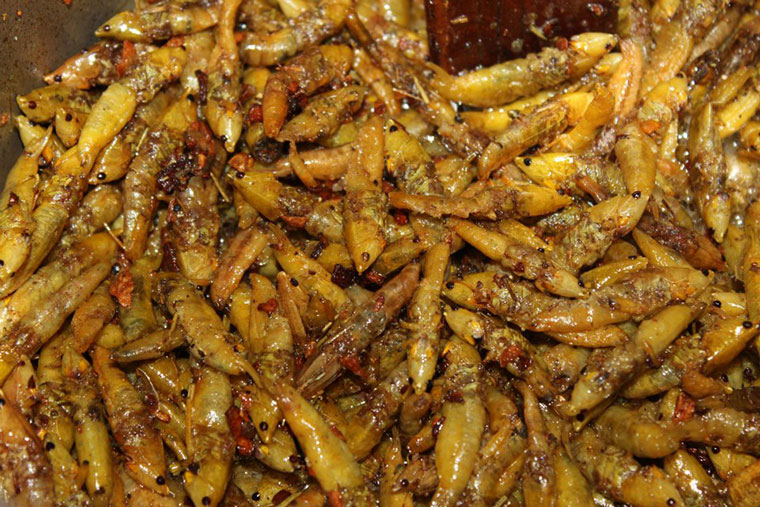The Uganda National Bureau of Standards (UNBS) has set quality guidelines to be followed by sellers of edible insects including grasshoppers, also locally known as Nsenene.
UNBS will be collaborating with Makerere University School of Food Technology, Nutrition, and Bio-Systems Engineering (Food Science) with support from the International Centre of Insect Physiology and Ecology (ICIPE).
The standard is aimed at promoting the safe consumption of edible insects which are harvested, processed, and traded on the Ugandan market, in line with the UNBS mandate of developing, promoting, and enforcing standards for the protection of public health and safety, and the environment against dangerous and sub-standard products.
During the launch, the UNBS Executive Director, David Livingstone Ebiru, urged all traders of edible insects to seek UNBS certification to ensure the safety of their products for public consumption.
“The quality assurance measures involve analysis of unwanted biological and chemical substances which may contaminate the insects during the process of harvesting, processing, packaging, or transportation,” said Ebiru.
The Vice Chancellor of Makerere University, Professor Barnabas Nawangwe, thanked UNBS for partnering with the university to promote research on innovative products such as edible insects, which require relevant standards to be in place to facilitate commercialization.
He further encouraged entrepreneurs to commercialize edible insects given their nutritional value and market opportunities both locally and internationally.
Some of the standard requirements state that the edible insect, whether, whole or granulated or powder or paste and either fried or dried shall;
Be free from adulterants, extraneous material, and objectionable odour.
Be free from infestation and contamination by pests.
Comply with the maximum pesticide residue and veterinary residue limits established by the CODEX Alimentarius Commission for similar commodities.
Not contain heavy metal contaminants in amounts that may represent a hazard to health.
Be hygienically produced, prepared, and handled.
Be packaged in food-grade containers, which will safeguard the hygienic, nutritional, and organoleptic qualities of the product.
